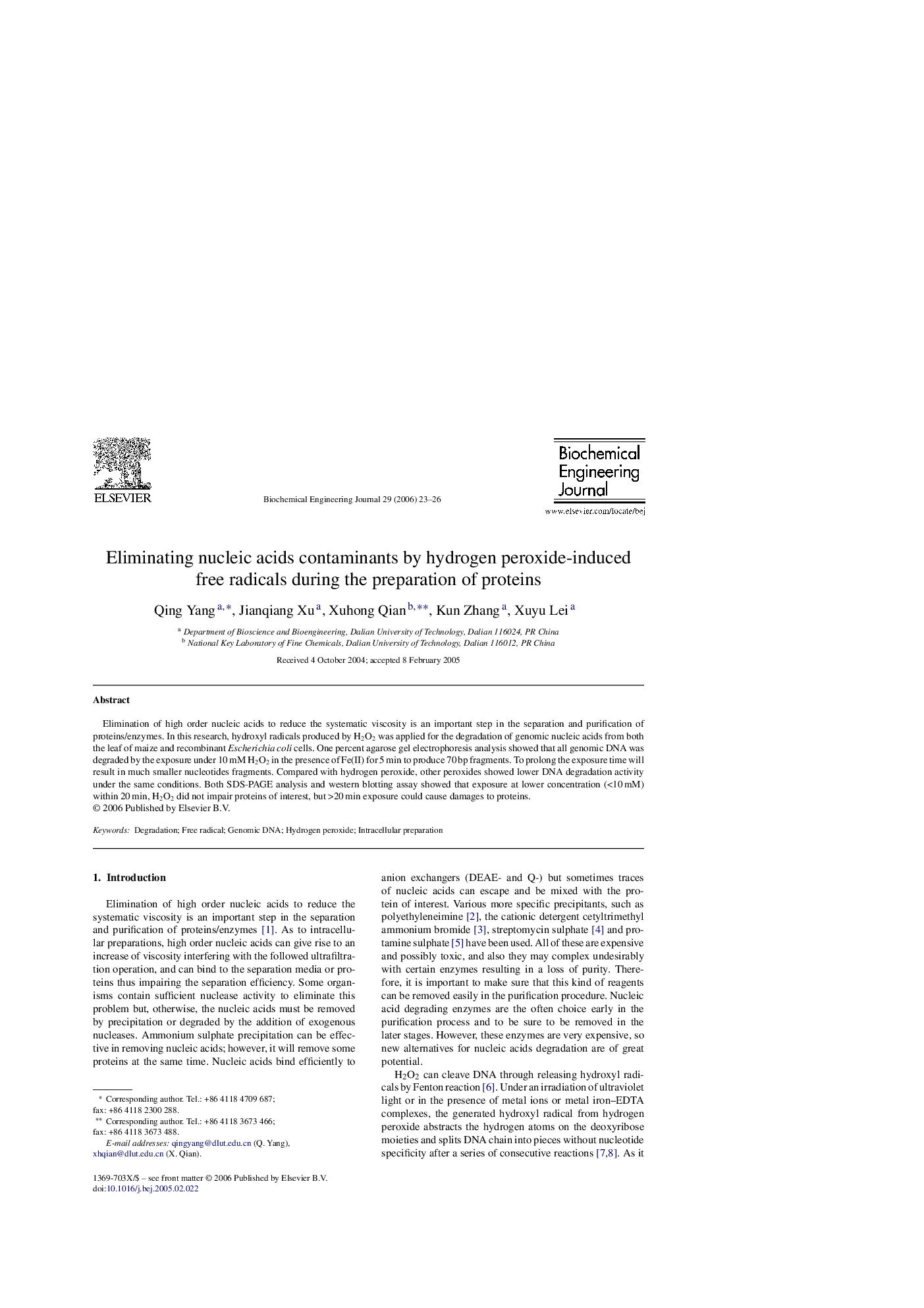| Article ID | Journal | Published Year | Pages | File Type |
|---|---|---|---|---|
| 5053 | Biochemical Engineering Journal | 2006 | 4 Pages |
Elimination of high order nucleic acids to reduce the systematic viscosity is an important step in the separation and purification of proteins/enzymes. In this research, hydroxyl radicals produced by H2O2 was applied for the degradation of genomic nucleic acids from both the leaf of maize and recombinant Escherichia coli cells. One percent agarose gel electrophoresis analysis showed that all genomic DNA was degraded by the exposure under 10 mM H2O2 in the presence of Fe(II) for 5 min to produce 70 bp fragments. To prolong the exposure time will result in much smaller nucleotides fragments. Compared with hydrogen peroxide, other peroxides showed lower DNA degradation activity under the same conditions. Both SDS-PAGE analysis and western blotting assay showed that exposure at lower concentration (<10 mM) within 20 min, H2O2 did not impair proteins of interest, but >20 min exposure could cause damages to proteins.
